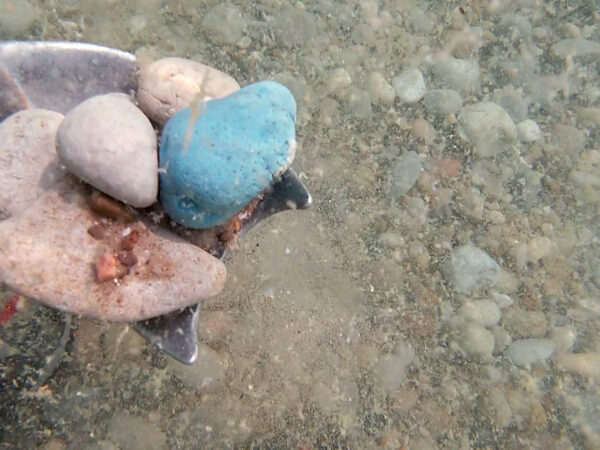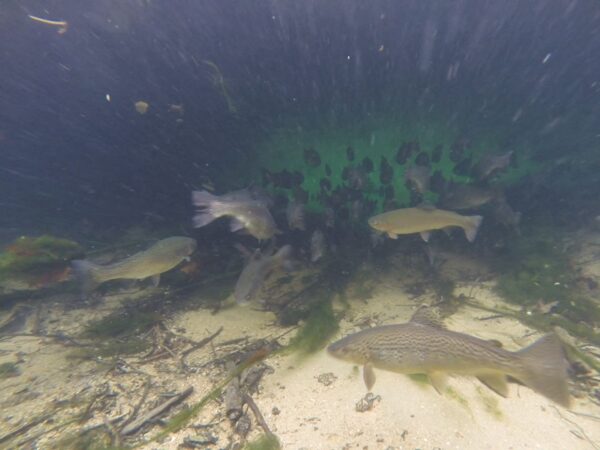
Science Says What? is a monthly column written by Great Lakes now contributor Sharon Oosthoek exploring what science can tell us about what’s happening beneath and above the waves of our beloved Great Lakes and their watershed.
On July 26, 2010, people living along Talmadge Creek in Marshall, Michigan awoke to a sharp, sickening smell. Those who followed their noses to the creek witnessed an environmental horror.
Water flowed black and shiny, coating turtles and waterfowl with a smelly goo and transforming grasses and bushes along the banks from green to oily black.
People’s eyes watered and throats burned as they breathed in fumes and some developed headaches and felt sick to their stomachs. As they were soon to discover, dilbit had been spilling from a rupture in a nearby oil pipeline since the night before.
Great Lakes residents now know only too well what happened that night. Calgary-based Enbridge Inc., which owns the pipeline, hadn’t realized right away there was a problem. By the time engineers closed the pipeline valves, an estimated 3.2 million liters (843,000 gallons) had leaked into Talmadge Creek and from there into the nearby Kalamazoo River.
While the oil didn’t make it as far as Lake Michigan, it did contaminate nearly 65 kilometers (40 miles) of waterways making it one of the largest inland oil spills in U.S. history.
Understandably, clean up efforts took precedence and it was some time before research into this unasked-for real-world experiment could begin. That meant how the dilbit behaved in those first few frantic days and weeks was a mystery.
For the next decade or so, how dilbit reacts in freshwater ecosystems seemed up for debate. Does it sink in both rivers and lakes? How long does it take to break down? And are these breakdown products more or less toxic than dilbit?
No idle questions given the pipelines criss-crossing the Great Lakes region and the fact dilbit behaves very differently in freshwater versus marine systems. Despite the fact there are more spills in freshwater, most research focuses on ocean spills where bacteria have evolved to feed off and break down oil seeping from natural oil vents on the sea floor.
Intel for future cleanups
In 2018, a group of scientists deliberately poured dilbit into a freshwater lake in the Experimental Lakes Area (ELA) of northwestern Ontario and now their findings – which they hope will inform future clean up efforts – are starting to come out.
Of course, dilbit is no ordinary oil. Natural bitumen is a type of extra-heavy crude oil and doesn’t flow like light crude. It flows more like peanut butter, which means it doesn’t really flow at all.
It must be diluted with solvents – lighter-weight hydrocarbons – that make the oil runnier so that it can be transported via pipelines. This less viscous mix of diluted bitumen is known as dilbit, for short.
The ELA site where the scientists spilled dilbit is comprised of 58 small lakes and their watersheds, set aside for scientific research. Operated by the International Institute for Sustainable Development, it is the only research facility in the world dedicated to assessing human impacts on whole aquatic ecosystems.
In one of those lakes, University of Ottawa environmental toxicologist Jules Blais and his team set up a series of limnocorrals – floating rings 30 feet in diameter attached to plastic curtains anchored to the lake bottom. In other words, they created a bunch of giant test tubes.
The researchers then poured seven different volumes of dilbit into those test tubes to mimic actual spills in both the U.S. and Canada. The highest dose mirrored the ratio of oil to water seen at Kalamazoo.
“Fish may be smarter than we think”
While the Kalamazoo spill eventually proved dilbit sinks in rivers, questions remained about whether it would do the same in a lake. The received wisdom was that it sinks in rivers because dilbit gets denser as it mixes with suspended sediment churned up by the current. But lake water is generally less turbulent and contains less sediment, so some experts expected dilbit wouldn’t sink.
They were wrong. In a study published in June, Blais’s team showed it does in fact sink in freshwater lakes.
The lowest dilbit treatment began to sink on day 12, whereas the highest sank on day 31. The greater the volume, it turns out, the longer it takes for volatile solvents to evaporate and the remaining oil to mix with water, making it denser. But all volumes of spilled dilbit eventually sank.
This is important information because cleaning oil from sediments often means digging it up and removing it – a damaging and costly form of remediation. Far better to skim it from the water’s surface.
Blais’s team also discovered the rate at which dilbit weathered and broke down didn’t depend on how much was spilled. And because lakes don’t have a lot of oil-munching bacteria, microbial break down wasn’t much of a factor either. Rather, dilbit broke down into smaller chemical components thanks to evaporation and sunlight.
But whether degraded by sunlight or bacteria, the end result is the same: the breakdown product is even more toxic than dilbit, says Blais. So not great news.
There was, however, one bright spot. The dilbit and its breakdown products were much less toxic to fish than the researchers expected.
“When the oil was floating on top, they probably went to the bottom. When wind blew the oil in one direction, they probably went in the other direction,” Blais said. “Fish may be smarter than we think.
Catch more news at Great Lakes Now:
Science Says What? Bacteria in Lake Huron sinkhole do a daily tango
Science Says What? Looking for love as northern forests heat up
Featured image: Photo courtesy of Jose Rodriguez-Gil




